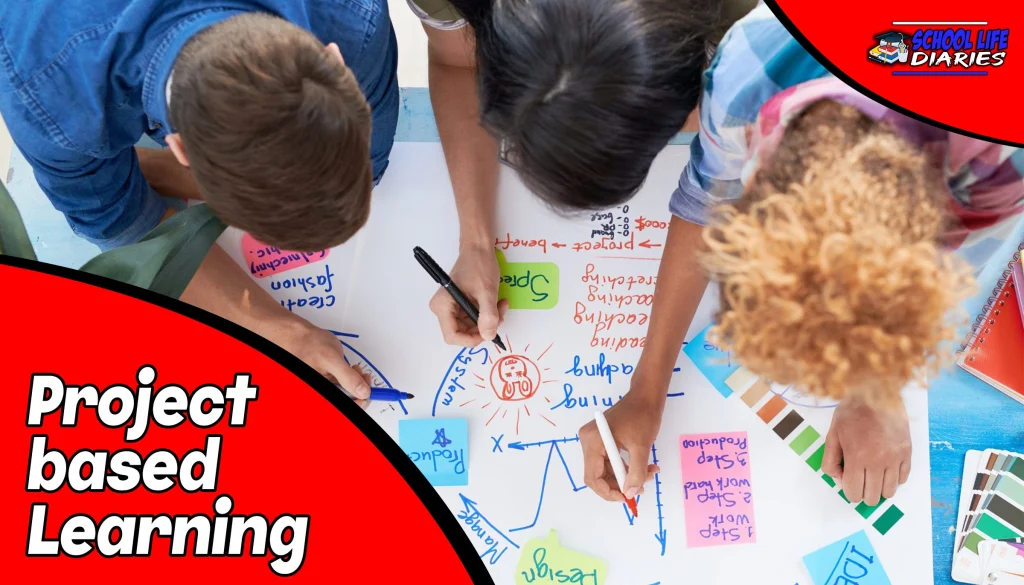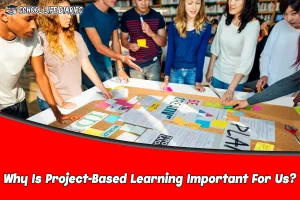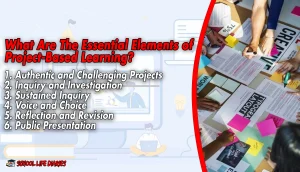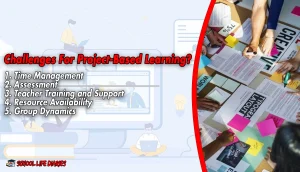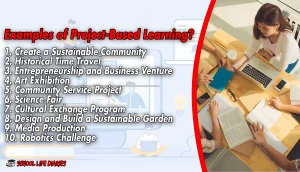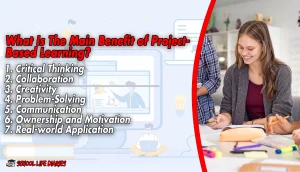In this article, we will explore the concept of project-based learning (PBL) and its significant benefits. Project-based learning is an innovative educational approach that promotes active and engaged learning through real-world projects. It offers students the opportunity to apply their knowledge and skills to solve complex problems, fostering critical thinking, collaboration, and creativity. We will delve into the definition of project-based learning, discuss its importance, explore the essential elements, identify challenges, provide examples, and highlight its main benefits.
What Is Project-Based Learning?
Project-based learning is an instructional method that centers around the completion of projects as the primary means of learning. It involves students working on meaningful projects that require them to investigate and explore real-world issues or challenges.
These projects are designed to be relevant, engaging, and aligned with the curriculum, enabling students to apply their knowledge and skills in authentic contexts. Project-based learning promotes active learning, as students actively construct their own knowledge and understanding through inquiry, problem-solving, and collaboration.
Why Is Project-Based Learning Important For Us?
Project-based learning holds immense importance in contemporary education for several reasons. Absorption of information to active engagement and participation. By actively participating in projects, students develop a deeper understanding of the subject matter and acquire critical thinking and problem-solving skills that are crucial for success in the real world.
Project-based learning promotes interdisciplinary learning, enabling students to integrate knowledge and skills from various subjects to solve complex problems. This interdisciplinary approach mirrors the interconnected nature of the real world and prepares students for the challenges they will encounter in their future careers.
Furthermore, project-based learning fosters collaboration and teamwork. Students work together in teams, sharing responsibilities, and leveraging each other’s strengths. This collaborative aspect of project-based learning helps develop important social and communication skills that are essential for success in the workplace.
What Are The Essential Elements of Project-Based Learning?
To ensure the effective implementation of project-based learning, certain essential elements must be present:
1. Authentic and Challenging Projects:
Projects should be relevant to real-world situations, challenging students to think critically and solve problems.
2. Inquiry and Investigation:
Students engage in research, investigation, and inquiry to explore and understand the project’s central concepts and ideas.
3. Sustained Inquiry:
Projects should allow for an extended period of inquiry, providing students with the time and opportunity to delve deep into the subject matter.
4. Voice and Choice:
Students should have some autonomy in selecting the project topic, methods, and presentation formats. This fosters ownership and motivation.
5. Reflection and Revision:
Reflection and revision are integral parts of project-based learning. Students should reflect on their progress, identify areas for improvement, and revise their work accordingly.
6. Public Presentation:
Students present their projects to an authentic audience, such as classmates, teachers, or community members. This enhances their communication skills and builds confidence.
Challenges For Project-Based Learning?
Implementing project-based learning can present certain challenges. Educators and students may face the following obstacles:
1. Time Management:
Projects require careful planning and time management skills to ensure completion within the given timeframe.
2. Assessment:
Assessing project-based learning can be challenging as it goes beyond traditional tests and exams. Alternative assessment methods such as rubrics and portfolios are often used.
3. Teacher Training and Support:
Educators need proper training and support to effectively design and implement project-based learning in their classrooms.
4. Resource Availability:
Projects may require specific resources or technologies. Ensuring access to these resources can be a challenge in some educational settings.
5. Group Dynamics:
Collaborative projects rely on effective group dynamics. Managing conflicts and ensuring equal participation can be demanding. Despite these challenges, project-based learning offers immense benefits that outweigh the difficulties, making it a worthwhile approach to education.
Examples of Project-Based Learning?
To provide a better understanding of project-based, let’s explore some examples:
1. Create a Sustainable Community:
Students can collaborate to design and plan a sustainable community, considering factors such as renewable energy, waste management, and urban planning.
2. Historical Time Travel:
Students research a historical period and create an immersive experience where they assume the roles of significant figures and recreate historical events.
3. Entrepreneurship and Business Venture:
Students develop a business plan for a product or service, covering aspects such as market research, financial planning, and marketing strategies.
4. Art Exhibition:
Students curate an art exhibition, showcasing their artwork while incorporating elements of art history, criticism, and interpretation.
5. Community Service Project:
Students identify a community need and develop a project to address it, such as organizing a food drive or creating a mentorship program.
6. Science Fair:
Students conduct scientific experiments and present their findings at a science fair, fostering scientific inquiry and communication skills.
7. Cultural Exchange Program:
Students explore different cultures and organize a cultural exchange program where they share traditions, food, and art with their peers.
8. Design and Build a Sustainable Garden:
Students design and construct a sustainable garden, learning about ecology, gardening techniques, and environmental stewardship.
9. Media Production:
Students create a media project, such as a documentary or a podcast, addressing social or environmental issues.
10. Robotics Challenge:
Students design, program, and build robots to solve specific challenges, promoting problem-solving, engineering, and coding skills.
What Is The Main Benefit of Project-Based Learning?
The main benefit of project-based is the holistic development of students. By engaging in real-world projects, students acquire a range of valuable skills and attributes, including:
1. Critical Thinking:
Project-based enhances students’ critical thinking abilities as they analyze problems, evaluate information, and make informed decisions.
2. Collaboration:
Collaborative projects foster teamwork, communication, and interpersonal skills as students work together towards a common goal.
3. Creativity:
Projects provide students with opportunities to think creatively, explore innovative solutions, and express themselves through various mediums.
4. Problem-Solving:
Through project-based, students develop problem-solving skills by identifying challenges, generating solutions, and implementing strategies.
5. Communication:
Presenting projects to an audience enhances students’ oral and written communication skills, helping them articulate their ideas effectively.
6. Ownership and Motivation:
Project-based learning promotes student ownership and motivation, as they have a sense of responsibility and control over their learning.
7. Real-world Application:
By working on authentic projects, students bridge the gap between theory and practice, applying their knowledge and skills to real-world situations.
Project-based Learning Ideas Your Class Will Love
Here are some project-based ideas that will captivate your class:
1. Create a Sustainable Community:
Challenge your students to design and plan a sustainable community that incorporates renewable energy, green spaces, and eco-friendly practices.
2. Historical Time Travel:
Take your students on a journey through history as they research and recreate a specific historical period, immersing themselves in the events and characters of that era.
3. Entrepreneurship and Business Venture:
Encourage your students to develop their entrepreneurial skills by creating a business plan for a product or service, including market research, financial projections, and marketing strategies.
4. Art Exhibition:
Unleash your students’ artistic talents by organizing an art exhibition that showcases their artwork and incorporates elements of art history and criticism.
5. Community Service Project:
Guide your students in identifying a community need and developing a project to address it, such as organizing a charity event, creating a volunteer program, or initiating a recycling campaign.
6. Science Fair:
Inspire scientific curiosity by organizing a science fair where students design and conduct experiments, analyze data, and communicate their findings to a wider audience.
7. Cultural Exchange Program:
Promote cultural understanding and appreciation by organizing a cultural exchange program where students explore different cultures, share traditions, and celebrate diversity.
8. Design and Build a Sustainable Garden:
Engage your students in hands-on learning by designing and building a sustainable garden, teaching them about environmental stewardship, gardening techniques, and the importance of biodiversity.
9. Media Production:
Harness the power of media by guiding your students in creating a media project, such as a documentary, podcast, or social media campaign, focusing on a specific issue or cause.
10. Robotics Challenge:
Ignite your student’s interest in STEM fields by challenging them to design, program, and build robots to solve specific problems, fostering critical thinking, engineering, and coding skills.
FAQ:
1. How can project-based learning benefit students?
Project-based benefits students by promoting critical thinking, collaboration, problem-solving, creativity, and real-world application of knowledge and skills.
2. What are the essential elements of project-based learning?
The essential elements of project-based include a challenging problem or question, sustained inquiry, authentic tasks, student autonomy, and a public audience for the final product.
3. What are the challenges of project-based learning?
Challenges of project-based include time management, assessment strategies, teacher training and support, resource availability, and managing group dynamics.
4. Can project-based learning be implemented in any subject area?
Yes, project-based learning can be implemented in various subject areas, including math, science, language arts, social studies, and the arts.
5. How can teachers support project-based learning in the classroom?
Teachers can support project-based learning by providing guidance, scaffolding, and resources, facilitating collaboration, and creating a supportive learning environment.
6. What is the role of assessment in project-based learning?
Assessment in project-based learning focuses on both process and product. It involves formative assessments throughout the project, self-assessment, peer assessment, and authentic summative assessments that evaluate the final product or presentation.
Conclusion:
Project-based offers a dynamic and engaging approach to education, allowing students to develop essential skills and knowledge while addressing real-world challenges. By incorporating project-based learning into the classroom, educators can create a student-centered environment that promotes critical thinking, collaboration, creativity, and problem-solving.
Through hands-on projects, students become active participants in their own learning, preparing them for future success in an ever-changing world. Project-based learning is a powerful tool that allows students to unleash their full potential and become lifelong learners. So, embrace the benefits of project-based learning and inspire your students to think, create, and make a positive impact on the world.

